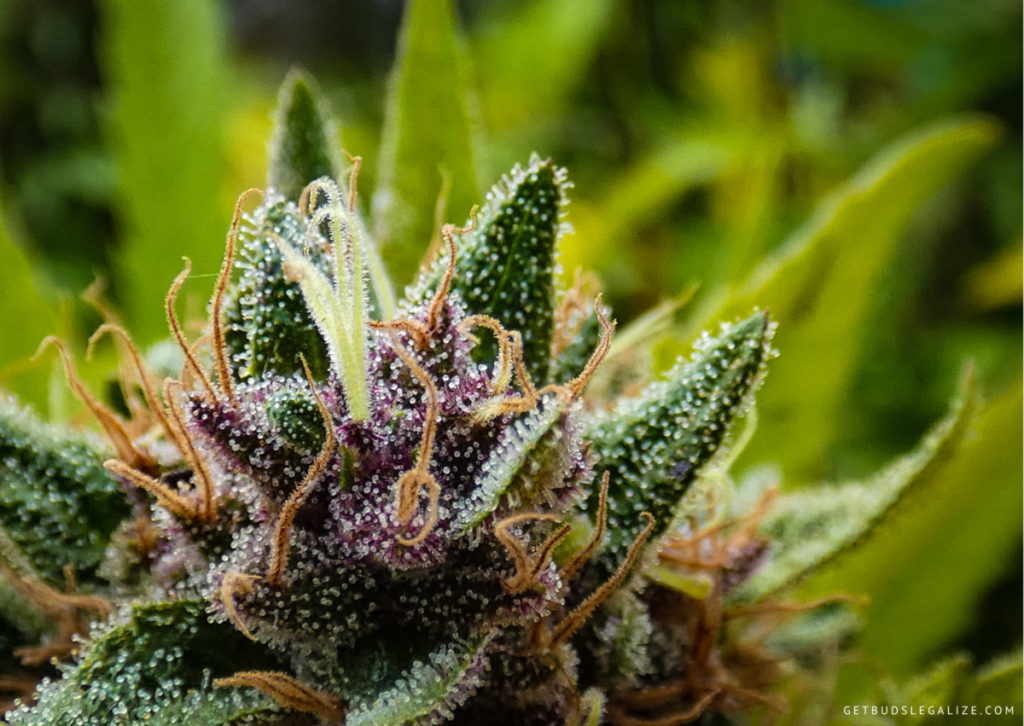Cannaflavins: Unique and Promising Flavonoids from Cannabis Plant
Cannabis is a plant that has been used for recreational and medicinal purposes for thousands of years. It contains hundreds of chemical compounds, known as cannabinoids, terpenes, and flavonoids, that interact with the human body in various ways. Among these compounds, cannaflavins is a type of flavonoid that is unique to the marijuana plant.
Flavonoids are natural compounds that have various biological activities, such as antioxidant, anti-inflammatory, and anti-cancer effects. Cannaflavins have been shown to inhibit the production of prostaglandins, which are inflammatory mediators involved in pain and inflammation.
Cannaflavins also have neuroprotective properties and can prevent the aggregation of amyloid beta, a protein that is associated with Alzheimer’s disease.
In this blog post, we will explore the structure, biosynthesis, and potential benefits of cannflavins, as well as the challenges and opportunities for its development as a therapeutic agent.
Chemical Structure of Cannflavins
Cannflavins A, B, and C are structurally similar to each other. They all have a flavone backbone with two phenyl rings attached to a central pyrone ring. The difference between them lies in the number and position of the hydroxyl groups on the phenyl rings.
Cannaflavin A has two hydroxyl groups on each ring, cannaflavin B has one hydroxyl group on each ring, and cannaflavin C has three hydroxyl groups on one ring and one on the other.
Biosynthesis of Cannaflavins

The biosynthesis of cannflavins involves several enzymes and precursors. The main precursor is chrysin, a common flavone that is derived from naringenin, a flavanone that is synthesized from phenylalanine in the phenylpropanoid pathway.
Chrysin is then converted to cannaflavin A by a specific enzyme called cannaflavin synthase (CFS), which catalyzes a unique reaction that involves the formation of a carbon-carbon bond between two chrysin molecules. Cannaflavin A can then be further modified by other enzymes to produce cannaflavin B or C.
Potential Health Benefits of Cannaflavin
Cannaflavin has been shown to have various pharmacological effects that could be beneficial for human health. Some of these effects are:
1. Anti-Inflammatory Properties:
Cannaflavin can inhibit the production of prostaglandins by blocking the enzyme cyclooxygenase-2 (COX-2), which is involved in inflammation and pain. It can also inhibit the production of leukotrienes by blocking the enzyme 5-lipoxygenase (5-LOX), which is another inflammatory mediator. Cannflavin has been shown to be more potent than aspirin in reducing inflammation in animal models.
2. Neuroprotective Properties:
Cannaflavin can protect neurons from oxidative stress and inflammation by scavenging free radicals and modulating the expression of inflammatory genes. It can also prevent the aggregation of amyloid beta, which is a hallmark of Alzheimer’s disease. Cannflavin has been shown to improve cognitive function and memory in animal models of Alzheimer’s disease.
3. Anticancer Properties:
Cannaflavin can induce apoptosis (programmed cell death) and inhibit angiogenesis (blood vessel formation) in cancer cells by regulating various signaling pathways. Cannflavin can also enhance the anticancer effects of other cannabinoids, such as THC and CBD, by synergizing with them. Cannflavin has been shown to inhibit the growth of various types of cancer cells, such as breast, prostate, colon, and skin cancer cells.
Flavonoids vs Terpenes: What are the differences?

Flavonoids are often confused with terpenes, which are another group of plant compounds that are abundant in cannabis. Terpenes are responsible for the distinctive smells and tastes of cannabis strains and also have various biological effects. Terpenes are synthesized from isoprene units, which are derived from the mevalonate pathway or the methylerythritol phosphate pathway in plants.
Flavonoids are a large group of polyphenolic compounds that have various functions in plants, such as pigmentation, UV protection, signaling, and defense. Cannabis flavonoids are synthesized from phenylalanine or tyrosine, which are derived from the shikimate pathway in plants.
Flavonoids and terpenes may interact with each other and with cannabinoids to modulate their effects, a phenomenon known as the entourage effect. For example, some flavonoids may inhibit the enzymes that degrade cannabinoids, thereby increasing their bioavailability and potency. Some terpenes may bind to cannabinoid receptors or alter their expression or signaling, thereby affecting their function and response.
Challenges and Opportunities for Cannflavin Development
Despite the promising effects of cannflavin, there are some challenges and limitations to its development as a therapeutic agent. Some of these are:
- Low abundance: Cannflavin is present in very low amounts in marijuana plants, ranging from 0.01 to 0.1 mg/g of dry weight. This makes it difficult to obtain sufficient amounts of cannflavin for further studies and applications.
- Biosynthetic complexity: The biosynthesis of cannflavin involves several enzymes and pathways that are specific to cannabis and not well understood. This makes it challenging to manipulate the biosynthesis of cannflavin or to produce it in other organisms, such as bacteria or yeast.
- Regulatory issues: Cannflavin is derived from cannabis, which is a controlled substance in many countries. This poses legal and ethical barriers to the research and development of cannflavin.
However, there are also some opportunities and strategies for overcoming these challenges and advancing the field of cannflavin research. Some of these are:
- Genetic engineering: Genetic engineering can be used to modify the expression or activity of the enzymes involved in the biosynthesis of cannflavin, such as CHS, CHI, PT1, and PT2. This can increase the yield and diversity of cannflavin in cannabis or in other organisms.
- Synthetic biology: Synthetic biology can be used to create artificial biosynthetic pathways for cannflavin production in other organisms, such as bacteria or yeast. This can bypass the regulatory issues and reduce the cost and environmental impact of cannflavin production.
- Pharmacological optimization: Pharmacological optimization can be used to improve the bioavailability, stability, and efficacy of cannflavin by modifying its structure or formulation. This can enhance the therapeutic potential and safety of cannflavin.
How Can Cannflavins Be Used for Medical Purposes?
Cannflavins are not approved by the FDA for any medical condition, but they may be used as a complementary or alternative therapy under the guidance of a qualified healthcare provider. Cannflavins may be used alone or in combination with other treatments, depending on the individual’s needs and preferences.
The dosage and duration of cannflavin use may depend on several factors, such as the type and severity of the condition, the form and concentration of the product, the body weight and metabolism of the user, and the presence of other medications or supplements. There is no standard or recommended dose for cannflavins, but some studies have suggested that doses ranging from 10 to 100 mg per day may be effective for some conditions.
Cannflavins should be used with caution and monitored for any adverse effects or interactions and should be avoided by pregnant or breastfeeding women, children, and people with bleeding disorders or allergies to marijuana plants. Cannflavins should also be discontinued before any surgery or dental procedure, as they may increase the risk of bleeding or interfere with anesthesia.
Bottom Line
Cannflavins are a promising group of natural compounds that have anti-inflammatory and analgesic properties. They may offer a safer and more effective alternative to conventional drugs for treating various inflammatory and neurodegenerative diseases.
However, more research is needed to confirm their efficacy and safety in humans, as well as to optimize their production and delivery methods.
FAQs about Cannaflavins
Cannflavins are a type of flavonoids, which are plant compounds that have antioxidant, anti-inflammatory, and anti-microbial effects. Flavonoids are found in many fruits, vegetables, herbs, and spices, and they give them their color and flavor. Cannflavins are specific to cannabis plants, and they are not found in any other plants.
Cannabinoids are another type of plant compounds that are unique to marijuana plants. They interact with the endocannabinoid system (ECS), which is a network of receptors and molecules that regulate various physiological processes, such as mood, pain, appetite, and immune function. The most well-known cannabinoids are tetrahydrocannabinol (THC) and cannabidiol (CBD), which have psychoactive and non-psychoactive effects, respectively.
Cannflavins and cannabinoids are different in their chemical structure, biosynthesis, and mode of action. Cannflavins do not interact with the ECS, but rather with other enzymes and pathways that modulate inflammation and pain. Cannflavins also have a lower molecular weight and higher water solubility than cannabinoids, which means they can be more easily absorbed and distributed in the body.
Cannflavins work by inhibiting the production of pro-inflammatory molecules called prostaglandins and leukotrienes. These molecules are involved in various inflammatory conditions, such as arthritis, asthma, inflammatory bowel disease, and neuropathic pain. Cannflavins block the enzymes that synthesize these molecules, namely cyclooxygenase-2 (COX-2) and 5-lipoxygenase (5-LOX).
By reducing inflammation and pain, cannflavins may also have neuroprotective effects. Inflammation is a major contributor to neurodegeneration, which is the loss of neurons and their function in the brain. Neurodegeneration is associated with diseases such as Alzheimer’s, Parkinson’s, multiple sclerosis, and stroke. Cannflavins may prevent or delay neurodegeneration by protecting the neurons from oxidative stress and inflammation.
Cannflavins have several potential benefits for human health. They may help treat chronic inflammatory diseases, such as rheumatoid arthritis, osteoarthritis, inflammatory bowel disease, psoriasis, eczema, and neuropathic pain. They may also help prevent or treat neurodegenerative diseases, such as Alzheimer’s, Parkinson’s, multiple sclerosis, and stroke.
Cannflavins have a favorable safety profile compared to other anti-inflammatory drugs. They do not cause gastrointestinal ulcers or bleeding, which are common side effects of non-steroidal anti-inflammatory drugs (NSAIDs), such as aspirin or ibuprofen. They also do not cause liver toxicity or addiction, which are common side effects of opioids, such as morphine or oxycodone. Cannflavins do not have psychoactive effects, unlike THC, which can cause euphoria, paranoia, or anxiety in some people.
However, cannflavins are not without risks. They may interact with other drugs or supplements that affect inflammation or pain, such as NSAIDs, steroids, anticoagulants, or antidepressants. They may also cause allergic reactions or hypersensitivity in some people, especially if they are applied topically. Cannflavins are not regulated by the Food and Drug Administration (FDA), which means their quality, purity, and potency may vary depending on the source and manufacturer.
Cannflavins are mainly found in the leaves and flowers of marijuana plants. They are more abundant in some strains than others, depending on the genetic and environmental factors that influence their biosynthesis. The main types of cannflavins are cannflavin A, B, and C.
Cannflavins can be extracted from marijuana plants using various methods, such as ethanol extraction or supercritical fluid extraction. They can also be synthesized in the laboratory using chemical or biological techniques. Cannflavins can be formulated into various products, such as oils, capsules, creams, sprays, or patches.
ILGM Fertilizer

- From seedling to harvest, give your plants everything they need.
- Enough for feeding at least 5 plants.
- Discounted Package Deal
- Works well in soil, hydroponics, and other growing mediums.
- The best way to treat your plants















